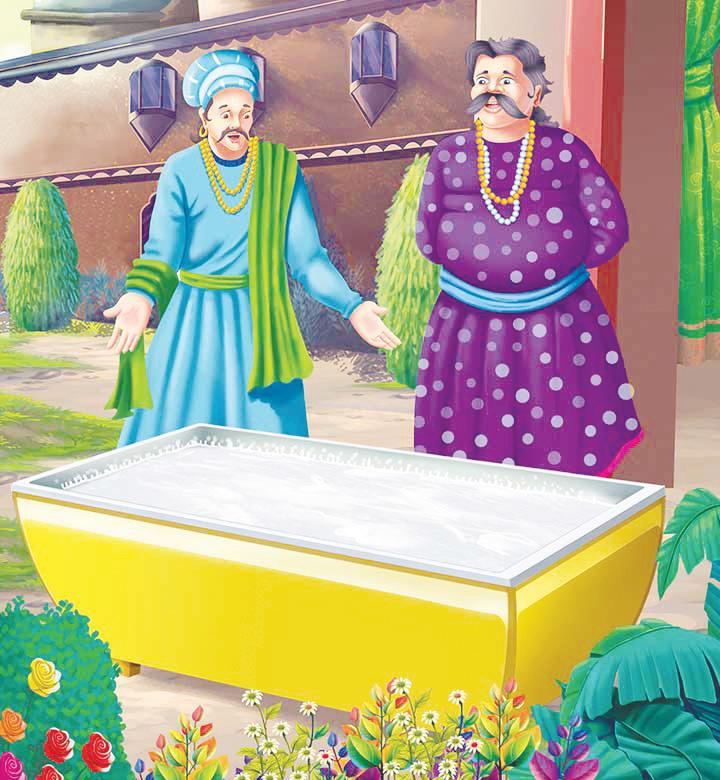
18 minute read
Chat with President
13 Austin South Asian | March 2021 In a Chat with President Joe Biden, Two Indian American Restaurant Owners Open Up about COVID-induced Losses
Up until a few months ago, this was a highly unlikely scenario: the president of the United States reaching out to you to inquire about the challenges of running a small business and how you have been managing it during the pandemic. But President Joe Biden is here now!
In a small clip released Feb. 13 by the White House, President Joe Biden was seen engaging in a remote conversation with Neal and Samir Idnani, the Indian American owners of NaanStop.
“Samir and Neal own NaanStop in Atlanta, Georgia — and like many small businesses around the country, they’ve been hit hard by the COVID-19 pandemic.
I gave them a call to hear their story and talk about how the American Rescue Plan will help businesses like theirs,” Biden tweeted.
The clip opens with the exterior
shots of the Atlanta, Georgia-based Indian restaurant, which the brothers have been running for the past 10 years. But when COVID-19 hit, they said they had to “completely adapt.” “As small business owners during the pandemic, every day is an open question,” said Samir. “When President Biden found out about our situation, he reached out.”
“How’re you guys doing?” Biden asked. “It’s been pretty rough, hasn’t it, lately?”
The duo said that their business has gone down by almost 75 percent since the pandemic hit, and they’ve had to trim their staff from 20 to 25 to 10-15 people.
“What is the greatest need you have now for your restaurants to be able to survive?” Biden then asked.
Neal added that “their greatest need is for everybody to be vaccinated because if people aren’t out shopping, the economy grinds to a halt.”
Biden then elaborated upon his rescue plan for small businesses. “I put together a rescue plan that provides tens of billions of dollars in grants to small businesses.
We have to invest more, not less. We got to give you a chance to rebuild, that’s separate and apart from dealing with the virus,” he said.
Neal also told the president that immigrant-owned restaurants around them are looking for guidance regarding the grants.
“They don’t have the expertise and I’m watching my neighbors make the wrong decision,” he said.
Biden then informed him that they’ve set up navigators to help people learn how to apply for grants and also what they need to open up safely.
Biden concluded his conversation with a question: “…if I get to Atlanta, can I come by?”
“Absolutely!” the duo replied. (Courtesy: https://www.indiawest. com/)
NASA Indian American Engineer Swati Mohan: Operations Lead For Perseverance Rover Landing On Mars
(Continued From Page 07)
The goal is to get them back to Earth as early as 2031.
Scientists hope to answer one of the central questions of theology, philosophy and space exploration.
Perseverance promptly sent back two grainy, black-and-white photos of Mars’ pockmarked, pimply-looking surface, the rover’s shadow visible in the frame of one picture.
President Joe Biden tweeted congratulations over the landing, saying: “Today proved once again that with the power of science and American ingenuity, nothing is beyond the realm of possibility.”
When the world watched the dramatic landing, in the control room, calm and composed bindi-clad Mohan was communicating and coordinating between the GN&C subsystem and the rest of the project’s team. Apart from being the lead systems engineer during the development process, she also looks after the team and schedules the mission control staffing for GN&C.
Mohan immigrated from India to the U.S. when she was just one year old. She spent most of her childhood in the Northern Virginia-Washington DC metro area. At the age of 9, after having watched “Star Trek” for the first time, she was quite astounded by the beautiful depictions of the new regions
of the universe that they were exploring. She immediately realized that she wanted to do that and “find new and beautiful places in the universe.” Mohan also had wanted to become a pediatrician until she was 16. It was, however, her first physics class and the “great teacher” she had, that she considered “engineer-
ing” as a way to pursue her interest in space exploration.
Mohan holds a Bachelor of Science degree in mechanical and aerospace engineering from Cornell University and completed her M.S. and Ph.D. degrees from MIT in aeronautics/astronautics.
While she has been a member of the Perseverance Rover mission since the beginning at NASA’s Jet Propulsion Laboratory in Pasadena, Mohan has also been a part of various important missions of NASA. She has worked on multiple missions such as Cassini (a mission to Saturn) and GRAIL (a pair of formation flown spacecraft to the Moon). According to nasa.gov, Mohan has worked on Mars 2020 since almost the beginning of the project in 2013. She is currently the Mars 2020 Guidance, Navigation, and Controls Operations Lead, at NASA’s Jet Propulsion Laboratory in Pasadena.
According to a report on floridatoday.com, Mohan said, “I’ve been on Perseverance longer than I’ve been at any school. I’ve been on Perseverance longer than my younger daughter is alive. It’s just taken up such a large portion of my life for so long.” (Courtesy: https:// www.indiawest.com/)

14 Austin South Asian | March 2021 Kids Corner

Water Conservation

By Anushka
Water conservation, we all know what it is, but how do we do it.
There are lots of ways to conserve water such as turning the tap off when you aren’t using it or drinking all the water in your glass before you put it away. vation.
If you are in a snowstorm a good way to conserve water is to melt and boil snow, and use that to wash your dishes.
Another way to conserve water during a snowstorm is to put a pan or trash can under your gutter so when the snow starts to melt you will be gathering water.
One more way to conserve water in a snowstorm is fill a large container with snow and over a period of time you will have water.
Other ways to conserve water are taking a shorter shower or turning the water off when you are brushing your teeth.
Water is super important next time you get the chance to conserve water make sure you do.
Vasundhara Varadarajan
Abhiveer Annoji

Comics

To Advertise 512-828-6709
Ever since Austin was hit with this snowstorm many peoples pipes have burst or frozen. This really opened my eyes on water conser-
By Shachi Kaushik
After a long day at work, if you are looking for ways to spend time with your little ones, then reading with your kids is magical. Reading not only helps in literacy but also strengthens the bond. If you are looking for book suggestions, then here are a few you can check out:
WHEN SPRING COMES by Author Kevin Henkes, Illustrator Lau-
ra Dronzek
Welcome Spring with a book. The award-winning, bestselling husband-and-wife teamed up to create this beautiful book—a fun way to introduce the concept of Spring. The book showcases the transition from winter to spring. The world transforms when Spring comes. The brown grass turns green, a seed starts growing, and the mounds of snow shrink, but for all this, you have to wait. Colorful illustrations showcase the small things that happen just as Spring arrives.
This book is available at the Round Rock Public Library.
The Wondrous Cloud Forest by Author and Illustrator Wendra Lynne
March 3rd is World Wildlife Day, and this book is a perfect reminder for us to take care of our wildlife. The lyrical language will take you on a journey into the wondrous forest. The book introduces rare exotic creatures of
tropical rainforests of New Guinea.
The book is an excellent way to introduce your children to climate change and its effect on wildlife as people worldwide are working to protect this enchanting land and all of its endangered species.
In the end, the author also discusses ways how a child can help save the Wondrous Cloud Forest. Like the lyrical language, the illustrations are beautiful and will transport you to the Wondrous Cloud Forest. A fun fact that Wendra shares about her work is that the pictures are painted by adding coffee to watercolors, which brings out beauti ful warm tones.
Festival of Colors’ - by Author Kabir Sehgal and Surishtha Sehgal, Illustrator Vashti Harrison
As we celebrate Holi, the festival of colors, grab this book to get into the Holi mood. A story about two siblings Mintoo and Chintoo, getting ready to celebrate Holi.
As spring arrives, they gather the colorful flowers to make the colored powder for Holi. On the big day, they gather together with their friends and family to play with the colors celebrating the festival. The illustrations capture the spirit of the festival.
This book is available at the Round Rock Public Library.
Celebrate the month books and free holiday activity sheets. Download a copy from our website www. smartyhathy. com.
Difference Between Influenza (Flu) And Covid-19?
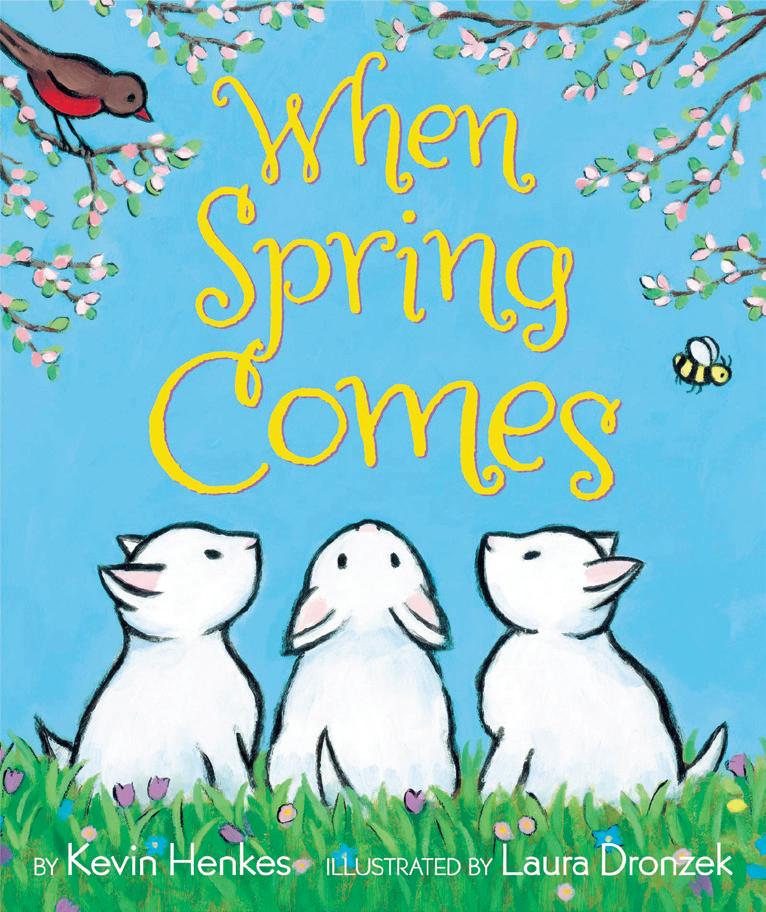


(Continued From Page 12)
Differences:
The risk of complications for healthy children is higher for flu compared to COVID-19. However, infants and children with underlying medical conditions are at increased risk for both flu and COVID-19.
Flu
Young children are at higher risk of severe illness from flu.
COVID-19
School-aged children infected with COVID-19 are at higher risk of Multisystem Inflammatory Syndrome in Children (MIS-C), a rare but severe complication of COVID-19.
Complications Similarities:
Both COVID-19 and flu can result in complications, including: • Pneumonia • Respiratory failure • Acute respiratory distress syndrome (fluid in the lungs) • Sepsis • Cardiac injury (for example, heart attacks and stroke) • Multiple-organ failure (respira-
tory failure, kidney failure, shock) • Worsening of chronic medical conditions (involving the lungs, heart, or nervous system or diabetes) • Inflammation of the heart, brain, or muscle tissues • Secondary bacterial infections (infections that occur in people who have already been infected with flu or COVID-19)
Differences: Flu
Most people who get flu will recover in a few days to less than two weeks, but some people will develop complications. Some of these complications are listed above.
COVID-19
Additional complications associated with COVID-19 can include: • Blood clots in the veins and arteries of the lungs, heart, legs or brain • Multisystem Inflammatory Syndrome in Children (MIS-C)
Approved Treatments Similarities:
People at high-risk of complications or who have been hospitalized for COVID-19 or flu should receive supportive medical care to help relieve symptoms and complications.
Differences: Flu
Prescription influenza antiviral drugs are FDA-approved to treat flu. People who are hospitalized with flu or at high-risk of flu complications with flu symptoms are recommended to be treated with antiviral drugs as soon as possible.
COVID-19
The National Institutes of Health (NIH) has developed guidance on treatment of COVID-19external icon, which will be regularly updated as new evidence on treatment options emerges. While remdesivir is an antiviral agent that is being explored as a treatment for COVID-19 and is available under an Emergency Use Authorization (EUA), there are currently no drugs or other therapeutics approved by the Food and Drug Administration (FDA) to prevent or treat COVID-19. Studies are in progress to learn more.
Vaccine Similarities:
Vaccines for COVID-19 and flu must be approved or authorized for emergency use (EUA) by the FDA.
Differences: Flu
There are multiple FDA-licensed influenza vaccines produced annually to protect against the 3 or 4 flu viruses that scientists anticipate will circulate each year.
COVID-19
Two COVID-19 vaccines have been approved for use by the FDA under an EUA and available. (courtesy: CDC)

16 Austin South Asian | March 2021 How And Why To Build A Raised Garden Bed This Season
Fairly easy to construct and even easier to maintain, raised garden beds are a great way to raise plants and vegetables in the comfort and convenience of your backyard.
In a recent episode of the Exmark Original Series, “Done-inA-Weekend-Extreme,” landscape designer and show host, Doug Scott, spoke to organic gardener Joe Lamp’l of “Growing a Greener World” about the ins and outs of raised garden beds.
Here are some of the top insights and tips Lamp’l shared.
• Why use raised garden beds? A raised garden bed can help facilitate the ideal growing environment, as most people don’t have that perfect soil naturally in their yard. Their accessibility makes them easier to work in and maintain. Plus, they’re a nice architectural design element in any landscape. • What’s the ideal size? The main
rule of the thumb applies to width. The bed should be wider than 4 feet, as you never want to compact the soil when working. Length however, is based on personal preference and needs. As far as height is concerned, you want the roots to be able to grow out and down as much as possible -- 6-inches at
minimum. While 12-inches is common, anything higher is a bonus.
• What materials work best? Treated lumber is the most readily available and economical material and will likely last the longest, however, being an organic gardener Lamp’l prefers untreated hardwood, as it lasts almost as long and doesn’t contain chemicals. Other materials you have around the home and yard, such as rocks, old tubs, etc., can work too.
• Where’s the best location? Build your raised garden bed on level ground, in full sun exposure near a water supply.
DIY Instructions:
To build a 10-foot x 4-foot x 18inch raised bed, you’ll need:
• Nine 6-inch x 6-inch x 12-foot cedar timbers • Tape measure, t-square and marking pencil • A saw and extension cord • One box of 10-inch heavy-duty exterior wood screws • Ten 24-inch x 1/2-inch rebar stakes • Twenty 10-inch galvanized timber spikes • Sledgehammer • Impact drill and long drill bit • Level • Hammer • Shovels • Hardware cloth, wire cutters and fence staples • Work gloves, safety glasses and ear plugs • Wheelbarrow (to transport soil)
1. Begin by cutting six, 6 x 6 timbers, each measuring 10-feet 6-inches in length. And six, 6 x 6 timbers, each measuring 4-feet 6-inches in length. Drill rebar holes in each timber.
2. Once the first layer of bed has been placed, leveled and squared in your desired location, fasten the corners using 10-inch wood screws. Secure the entire layer to the ground with 10 pieces of rebar.
3. Place the second layer of timbers, staggering the corners and fastening them with wood screws. Secure this layer to the first with ten 10-inch galvanized spikes.
4. Install galvanized cloth to prevent burrowing pests from eating earthworms and destroying plants.
5. Place the third layer of timbers (following above directions.)
6. Fill with soil and plants.
For more tips and complete build instructions, check out “How to Build Raised Garden Beds” by visiting Exmark.com/backyard. Exmark’s Backyard Life is part of a unique multimedia destination with a focus on helping homeowners make the most of their backyard. There you can also access other series, including “Prime Cuts” and “Dream Yards.”
For an amazing crop this season, take a cue from the professionals and build a raised garden bed for best results. (StatePoint)
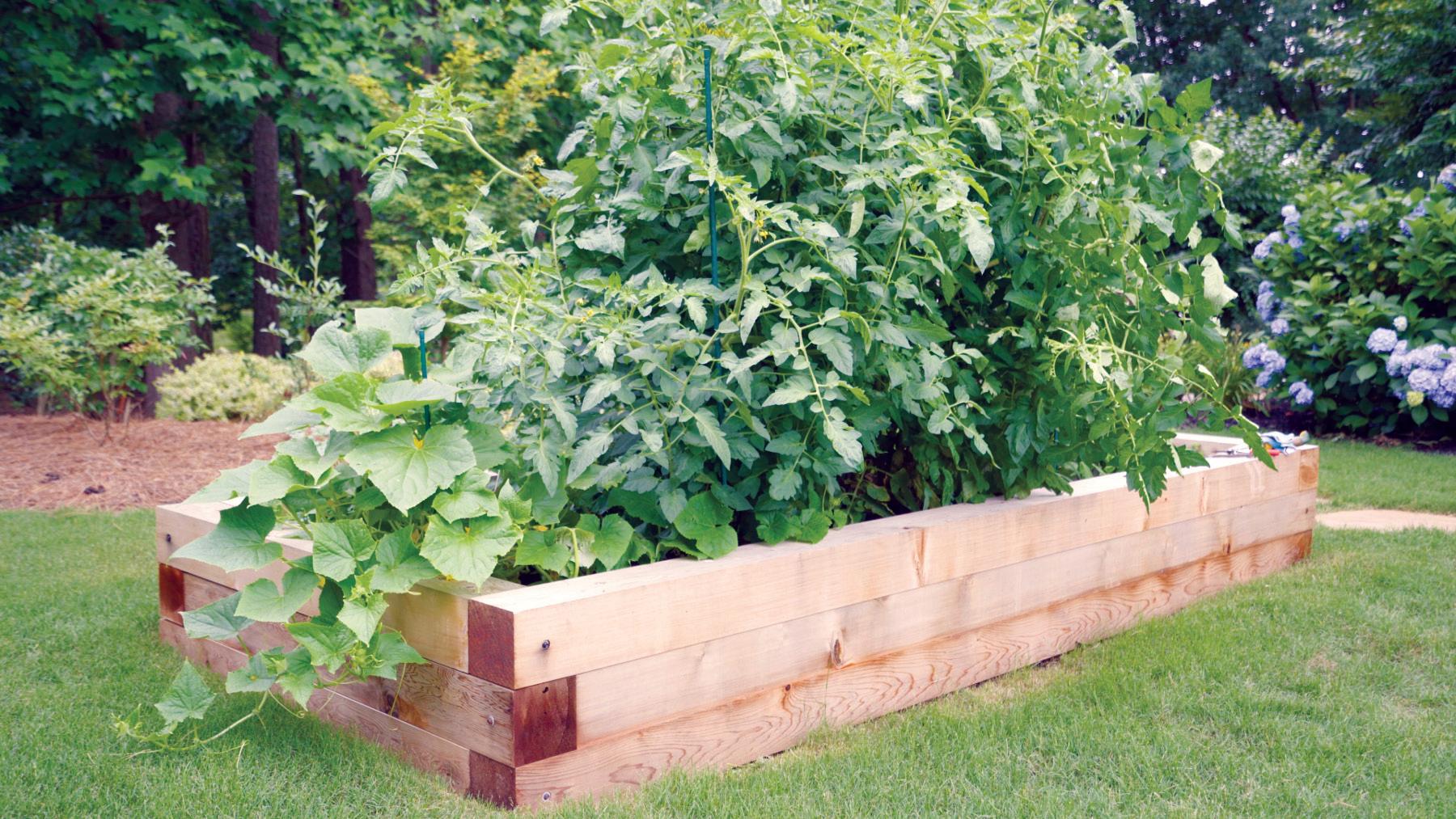
3 Hacks To Make Spring Cleaning A Breeze
Time for your annual spring clean? Make sure you’re equipped with the right tools and strategies. Here are a few cleaning hacks to help ensure a smooth and easy process.
De-Clutter First
Reducing clutter in your home means fewer objects to launder, dust and wipe down, and should be the first step of your spring clean. Start with dressers and closets.
As the seasons change, you’ll likely be reorganizing them anyway in order to stow winter items away while making spring and summer garments readily accessible.
As you do your seasonal swap, have bags and labels on-hand to sort items by what you are keeping, what you plan to donate, and what needs to be recycled or discarded.
Use the same organizational method to pare down knickknacks, books and other odds and ends as you tackle pantries, shelving and more.
Take this opportunity to wipe down shelving, particularly surface areas with food, dust and other residue build-up.
Streamline Your Clean
These days, disinfecting high-traf-
fic areas of the home should be top of mind. However, it doesn’t have to be complicated.
Streamline the task by selecting cleaning products that are safe for use on a wide variety of household surfaces, and can be used around kids and pets uct such as ARM & HAMMER Essentials Disinfecting Wipes, which kills cold and flu viruses, along with MRSA, strep, staph, E. coli, salmonella and kleb.
Available in Lemon Orchard and Renewing Rain scents, these wipes provide citrus-based disinfection that clean without harsh chemicals, and are safe for use on stainless steel, sealed granite, finished hardwood, tubs, shower walls, toilet exteriors and hard nonporous surfaces of car interiors. To learn more, visit armandhammercleans.com. A true deep clean is not just about what meets the eye, it’s also about what meets the nose.
Unfortunately, certain nooks and crannies of the home have a sneaky habit of odor build-up.
Squash problem areas with a versatile, essential item you probably already have on hand -- baking soda.
Place an opened box in your fridge to absorb unwanted odors, swapping it out every month or so.
Do the same in pantries where food items like onions and garlic are stored in order to neutralize their strong smells.
You might also try using ARM & HAMMER Garbage Disposal Cleaner, which are capsules containing baking soda.
Leaving behind a citrus scent, they are a useful tool in combatting kitchen sink odors.
A few essentials and some smart cleaning strategies is all you need to give your home some TLC this spring. (StatePoint)

17 Austin South Asian | March 2021 Jyotirlinga
A Jyotirlinga or Jyotirlingam, is a devotional representation of the Hindu god Shiva. The word is a Sanskrit compound of jyotis ‘radiance’ and linga. There are twelve traditional Jyotirlinga shrines in India.
According to Śiva Mahāpurāṇa, once Brahma (the god of creation) and Vishnu (the form of God during preservation) had an argument over supremacy of creation. To settle the debate, Supreme God Shiva pierced the three worlds appearing as a huge infinite pillar of light, the Jyotirlinga which later cooled into the holy mountain Annamalai (on which the Temple of Arunachalesvara is located).
Vishnu and Brahma split their ways to downwards and upwards respectively to find the end of the light in either direction. Brahma lied that he found out the end, while Vishnu conceded his defeat.
This lie of Brahma angered Shiva making him curse Brahma that even though he is the creator of the universe he would not be worshipped.
The jyotirlinga is the Supreme Shiva, partless reality, out of which Shiva appeared in another form, Lingodbhava. The jyotirlinga shrines are temples where Shiva appeared as a fiery column of light.
Originally there were believed to be 64 jyotirlingas while twelve of them are considered to be very auspicious and holy.
Each of the twelve jyotirlinga sites take the name of the presiding deity, each considered a different manifestation of Shiva. At all these sites, the primary image is lingam representing the beginningless and endless Stambha pillar, symbolising the infinite nature of Shiva. The twelve jyotirlingas are: Somnath in Gir Somnath, Gujarat Mallikarjuna in Srisailam, Andhra Pradesh Mahakaleswar in Ujjain, Madhya Pradesh Omkaresh war in Khandwa, Madhya Pradesh Kedarnath in Rudraprayag, Uttarakhand Bhimashankar in Pune, Maharashtra Vishwanath in Varanasi, Uttar Pradesh Trimbakeshwar in Nashik, Maharashtra Baidyanath in Deoghar, Jharkhand Nageshvara Jyotirlinga in
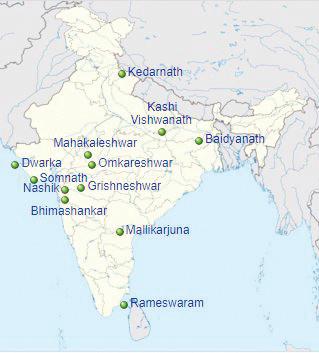
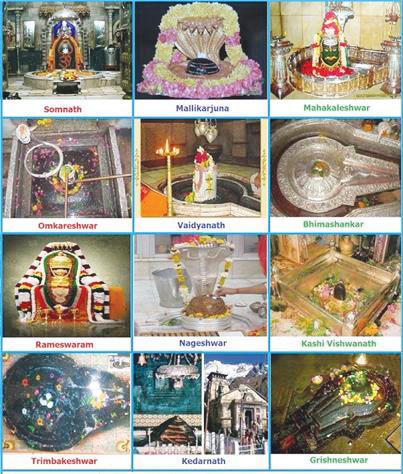
Dwarka, Gujarat Ramanathaswamy in Rameswaram, Tamil Nadu Grishneshwar in Aurangabad, Maharashtra
Akbar And Birbal
Fear or love?
“I think my people love me,” beamed Akbar during his stroll with Birbal in the royal garden.
“You are right your majesty. But people also fear you,” came the reply from Birbal.
Akbar frowned, “I do not believe it.”
“I will prove it Jahanpanah,” Birbal said and shared his plan with Akbar.
The next day, Akbar announced that he is going to the jungle for a dangerous hunt.
As a prayer, his subjects should pour a cup of milk into the large tub placed at the center of the royal palace courtyard.
The next day, Akbar found that the tub was filled with watery milk. Several subjects only poured water, assuming that the others would get milk and their water would get camouflaged.
The following day, Akbar made a similar announcement but this time said that he will check the people pouring the milk.
When Akbar returned, he found the tub overflowing with fresh milk.
“Didn’t I tell you, sir?” asked Birbal.
“This time people poured pure milk because they were afraid that you will find out there is no milk in it.
Your subjects care for you, but they also fear and that is why they filled the tub with milk this time.”
